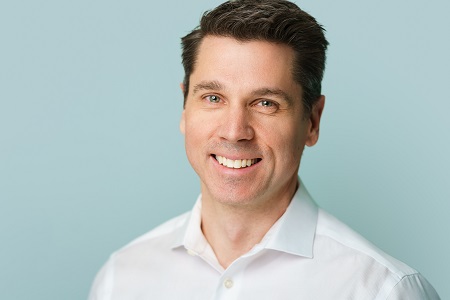Create a Program-Based Practice
MICHAEL SMITH, ND
If you have been practicing for any period of time, you have no doubt had the following experience: A patient consults you for their chronic condition, implements some of your recommendations, and then after a few visits stops coming in because they’re feeling better. After a year or 2, they are back, with many of the same issues, only slightly worse. You offer some additional treatments and lifestyle changes. They begin to feel better, and the cycle repeats. What the heck! We did not become naturopathic doctors to just treat people when they are acute enough to come in for an appointment. We became NDs to actually resolve a disease process, help people regain their health, and to fully execute the 6 principles of naturopathic medicine in doing so. Yet many of us find ourselves doing more sick-care than actually optimizing wellness.
Since most people these days are struggling with 1 or more chronic illness (diabetes, fibromyalgia, IBS, hypertension, autoimmunity, etc), a comprehensive approach is required to achieve true wellness. So how do we go from only seeing patients whenever they feel the need, to actually being committed to the journey of reversing their disease and facilitating optimal health? It takes a program. Let me explain.
An Approach That Works
Now, I am not talking about simply bundling your services and selling them for a discount. An example of that would be offering 5 or 10 visits over a course of time for a discounted fee, or maybe 20 neurofeedback sessions, or 20 IV cocktails, etc. That’s not the direction I’m advocating for you; such approaches just amount to packaging within the commodity model. In such cases, you’re attaching value to your treatments and services rather than to a desired outcome.
No, what I’m advocating is for you to create a comprehensive program, essentially a blueprint or a map for a patient’s journey to better health, and for you to act as their guide along the way. They may be engaged in this journey for 3, 6, 9, or even 12 months depending on the severity of their disease and what you feel it will take to restore their health. You are not going to be acting as the magician, with a magic pill or treatment that cures what ails them, but rather as their guide. Your patients are the ones taking responsibility for getting better because you are teaching them how to take ownership over their own health.
I converted my practice to a program-based approach over 5 years ago. This was after 10 years of practicing with a fee-for-service model. I was exhausted, working my tail off in a busy practice, making just enough to cover expenses and support my family, and often feeling frustrated that patients weren’t always following through on my recommendations or following up when they should, but instead picking and choosing what they felt was best for them or what they felt like paying for in the moment. I was done with this approach. I wanted to take our patient experience and my practice to the next level and find a way to earn greater revenue without having to work more hours. I had already brought other doctors into my practice, thinking that would be the solution, but it wasn’t. I was also done with seeing people only when they felt they needed it, not when I directed them to. And at every visit, I was having to sell each patient on the next supplement, the next lab test, the next appointment – and they would decide what they would or would not do, which severely limited their progress toward wellness. It was all so frustrating! Maybe you can relate?
What Do Your Patients Really Care About?
How do you make this jump? And, more importantly, how do you get your prospective client/patient to do the same? Well, there is a formula, but it starts with you changing your mindset about some things. You see, we get really excited talking about the amazing stuff that we can do, what supplements we will recommend, what lab test, what treatments or procedures, etc. But your patient really doesn’t care about all that stuff; what they are after is simply better health. They don’t have the desire to become an expert doctor and understand why you choose this supplement over another; they just need to know that you are competent and that you have a plan to get them to their desired destination.
Think of it this way: Let’s say a 46-year-old female, Sara, comes into your office with a barrage of symptoms including fatigue, depression, overweight, chronic inflammation, and decreased libido. Understand that Sara isn’t in your office only to remove some of her symptoms; she is secretly looking for someone who can help her get her life back! She wants to feel beautiful, to have confidence, to have intimacy with her husband, and to play volleyball with her daughter. She wants to become a super mom or super wife. This is her hoped-for destination. She has far less interest in the specific treatments you might offer. She just wants to depart from her sad state, right now, and to arrive at her hoped-for destination of super mom/super wife.
She would place great value on her destination – we’ll call it Fiji – and would be willing to invest to get there. But if you try to place value on your treatments and symptom relief only, she will walk out of your office saying, “I’ll have to think about it.” Why? Because she sees your offer not as an investment but as an expense that she can’t justify. You tried to sell her the plane ride instead of the destination.
Let’s take this example further. If I should happen to refer Sara to 10 different practices that have extremely competent doctors who offer slightly different approaches, she will probably receive up to 10 different recommendations. They might involve different protocols or treatments, supplements, and so on. As long as each of the 10 practitioners also addresses Sara’s personal responsibilities towards her daily lifestyle, she will likely reach Fiji even though each doctor chose a somewhat different course or plane ride. After all, it’s possible for different approaches to help people reach the same health goals.
So, you need to ask yourself: Do my patients care what my specific treatments are, or are they only interested in getting to Fiji?
I hope this doesn’t bruise your ego, but the correct answer is: they just want to get to Fiji. They don’t care how your airline gets them there. So why attach all your value to your services? The plane ride? Heck, the plane ride to Fiji is only $800, but the trip itself is worth $9000.
Consider the Orthodontic Model
To stress the point, think about the orthodontic model. Does the orthodontist place value in the plane ride – ie, metal cusps, wires, rubber bands, and a series of visits – or is the value in the destination, which is a beautiful and confident smile? An orthodontist knows which is best, and therefore never emphasizes the value of the braces. You, too, will come to understand that the destiny-packaging model is the answer to meeting your client’s true needs while allowing you to conduct your business on your terms. You will find that this model brings your client in as a partner in health – one who assumes personal responsibility and holds themselves accountable for the daily health decisions they make.
Education is Key
To make this journey successful for your clients, you also have to educate them. As naturopathic doctors, we love to teach. But I’m not suggesting that you just dump a bunch of your knowledge on your patients at their next visit. They need a curriculum to follow – one that educates them on how to truly take care of themselves, such that, in the end, they have gained the knowledge necessary to own their health and not need to rely on you or another doctor to tell them what to do. Why? Because they truly understand what they need to do and, most importantly, why.
Please understand that what you package can include specific treatments, supplements, diagnostic tests, follow-up visits, and education. But this is just the plane ride to get your client to their hoped-for destination. Although the plane ride is necessary, the value lies in reaching the destination.
As you think about creating a program to take people on their journey, the educational curriculum is by far the most valuable component, not the supplements, not the lab, not even the visits with you. Remember that if you provide them with the opportunity to go on a guided journey to their better health, they will make a commitment to do it.
The Impact of Failing to Educate Fully
In contrast, the traditional treatment model addresses symptoms but fails to fully educate the client about why they are unhealthy and how they can play a crucial role in achieving breakthrough outcomes. One thing I learned about health education from my early practice burnout is that
- people learn best in a structured format, and
- they must invest to gain the profound knowledge you pass on to them
Give away your expertise, your knowledge, and its perceived value drops like crazy in the eyes of recipients. This is one reason patients end their care early, don’t follow recommendations, and don’t hold themselves accountable. To effectively educate a client means providing a complete and structured educational curriculum with classes, videos, and workbook materials. The curriculum is far-reaching and not given away for free; it comes with a tuition investment. It is fantasy to believe that a doctor can provide effective, visit-by-visit verbal education that might contain a few handouts. And because such education is a giveaway, the client assigns little or no value to it. And they would be right. Such a rudimentary educational process has little long-term impact on a client.
Creating a Curriculum
You may be wondering how you can create an educational curriculum or where you can find the time. Don’t worry; there are easy ways to do this. Our practice works with an amazing coaching group that already had a complete curriculum built – one that we could begin using immediately and customize to our practice. You can also start recording the things you are always saying to your patients and add that to your curriculum. This educational component will help position you as a Category-1 doctor. To package your services means that you’re willing to be candid with your clients about what you expect from them if they are to reach their goals. Such expectations cover personal responsibility, time dedication, and financial investment.
A Program-Based Practice Recap
If you try to sell your services rather than your client’s destiny, you will find your prospective clients unimpressed. They have little or no interest in your services per se. They are only interested in whether you can help them reach their goals. Yet they may not know how to express that, and you can help them. Imagine an orthodontist trying to justify his or her fee by explaining the value of all the hardware pieces he or she uses to assemble braces. Of course, that never happens! The orthodontist spends no time discussing hardware. Instead, he or she sticks to what the outcome will look like (a beautiful smile), the time required to reach that goal, and personal responsibility during and after the process. The beautiful smile is where your client sees the value, and the client is therefore willing to invest in it. The orthodontist’s packaging approach is, of course, tailored for orthodontists.
In our practice, we worked with a coaching group that helped us to design our unique programs for our practice and our expertise. This simple program pillar is what took our practice, in the first 12 months of implementing the program-based model, from a 5-day workweek to a 4-day workweek, while simultaneously tripling our practice revenue. Not only was that a win for us, but also for our office team and, most importantly, for our patients who received amazing results through our programs.

Michael Smith, ND, is a graduate of SCNM. He has been in private practice in Charlotte, NC, since completing his family practice residency in 2005. Dr Smith and his team at Carolinas Natural Health Center have been working with Freedom Practice Coaching (FPC), a coaching group that helped him to revolutionize his practice and fully implement a program-based approach. In addition to running his practice, he now consults with FPC to help more practitioners build successful practices and gain true time freedom and financial freedom. Learn more about FPC at FreedomPracticeCoaching.com. You can find Dr Smith at [email protected] or facebook.com/drmikesmith.










